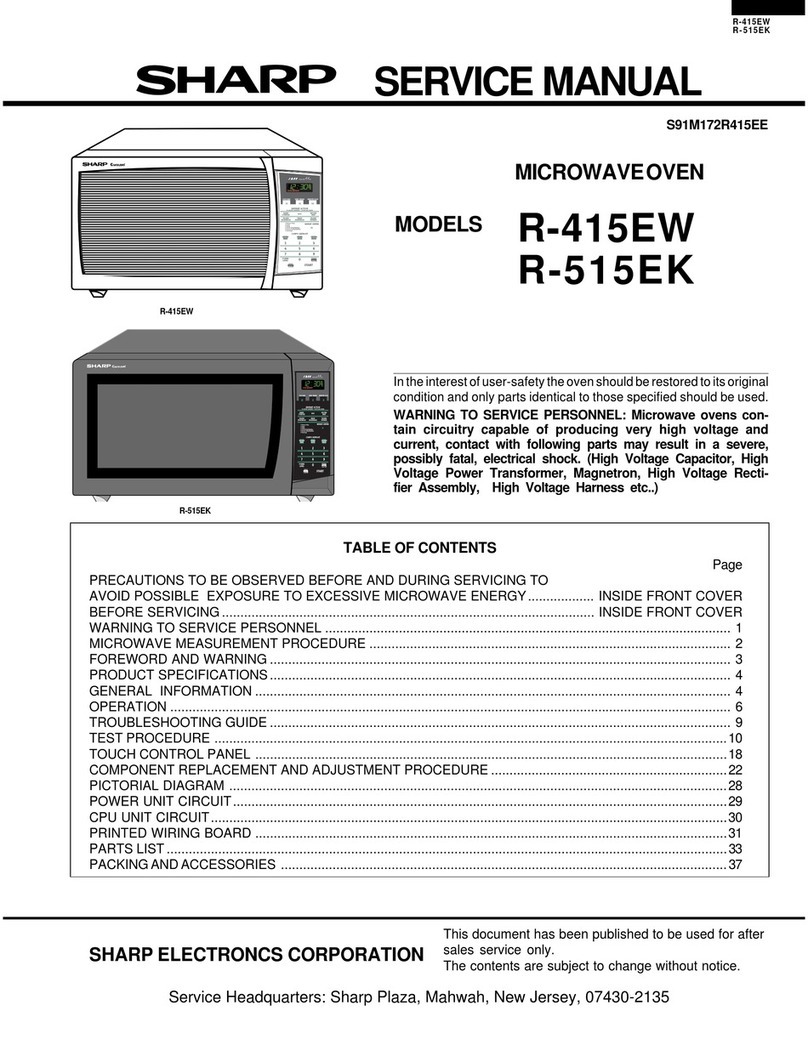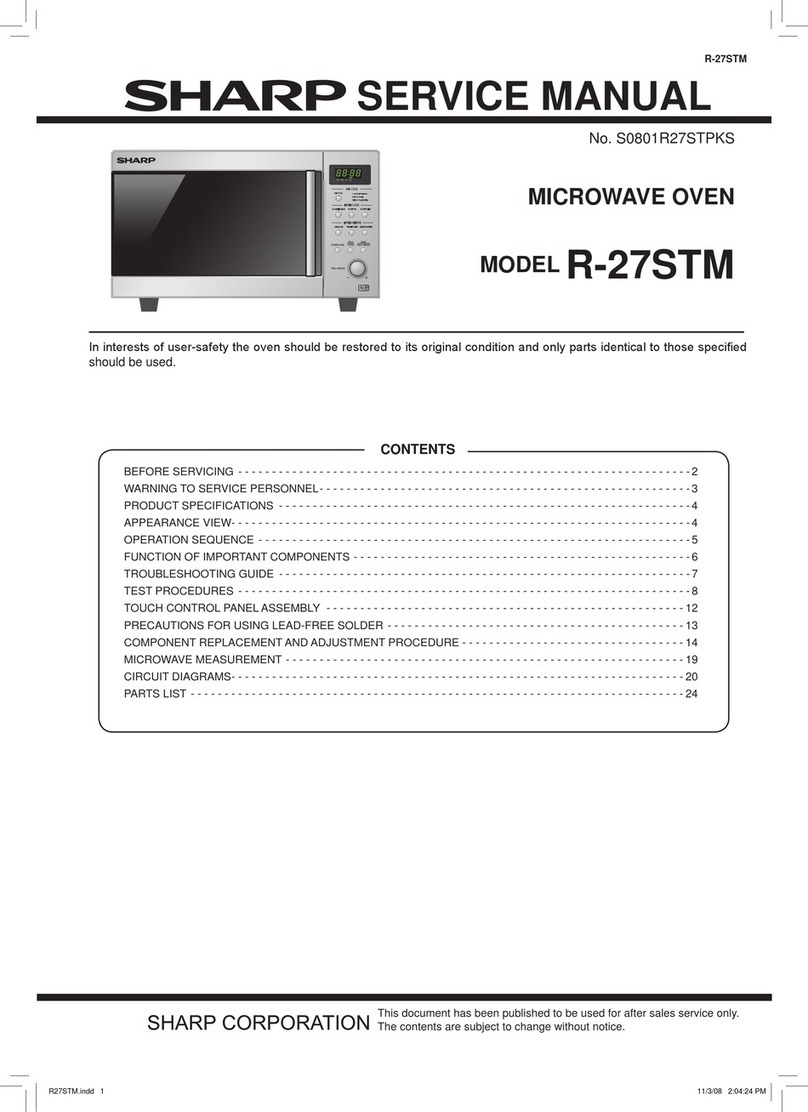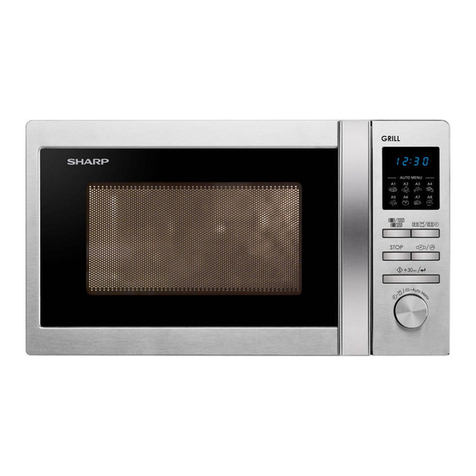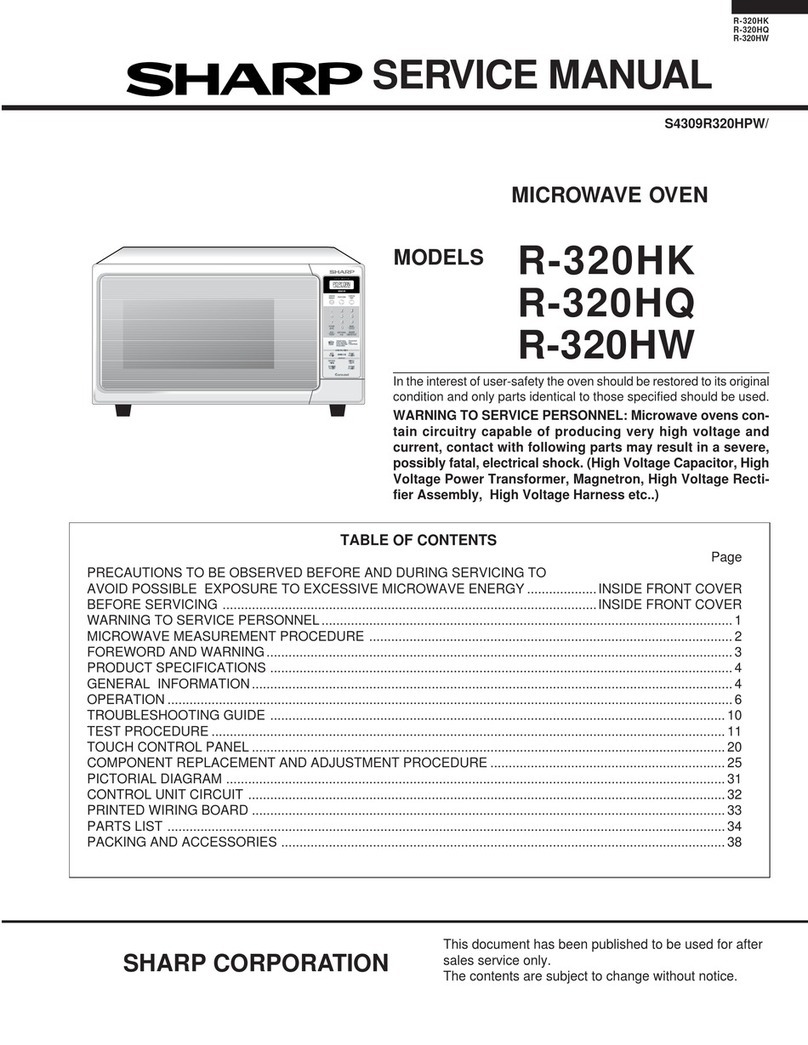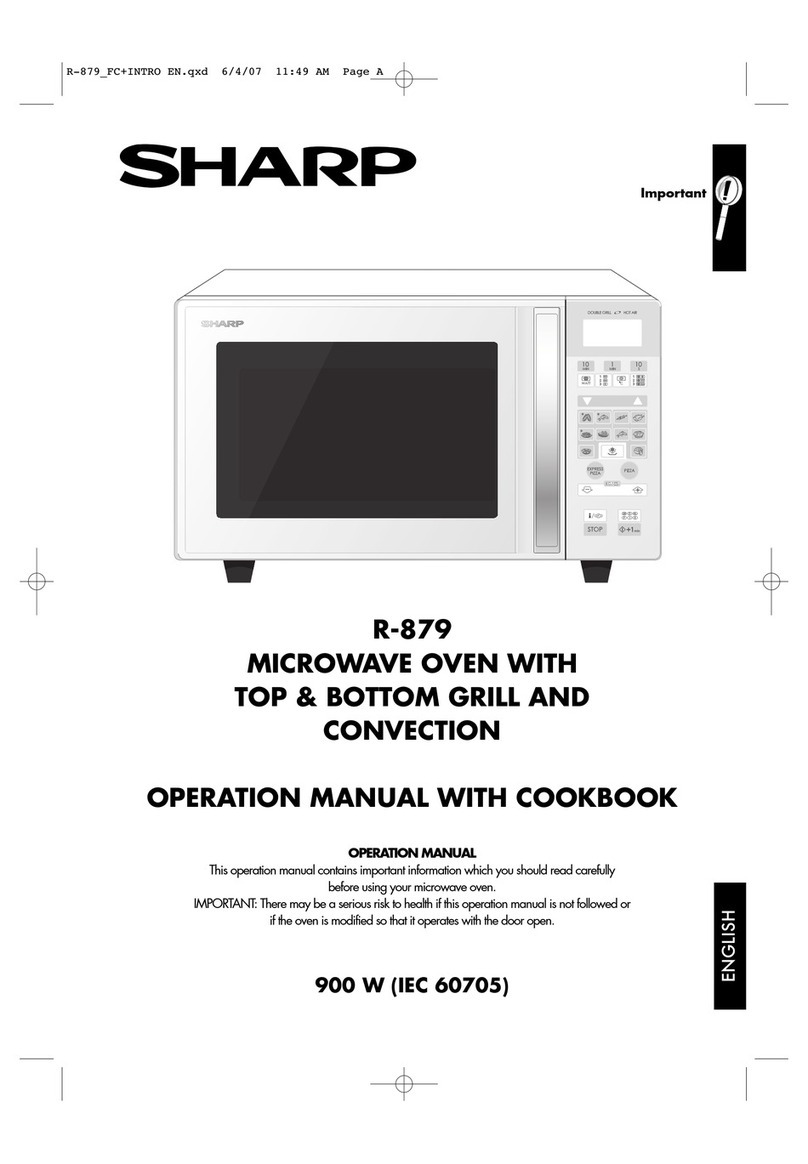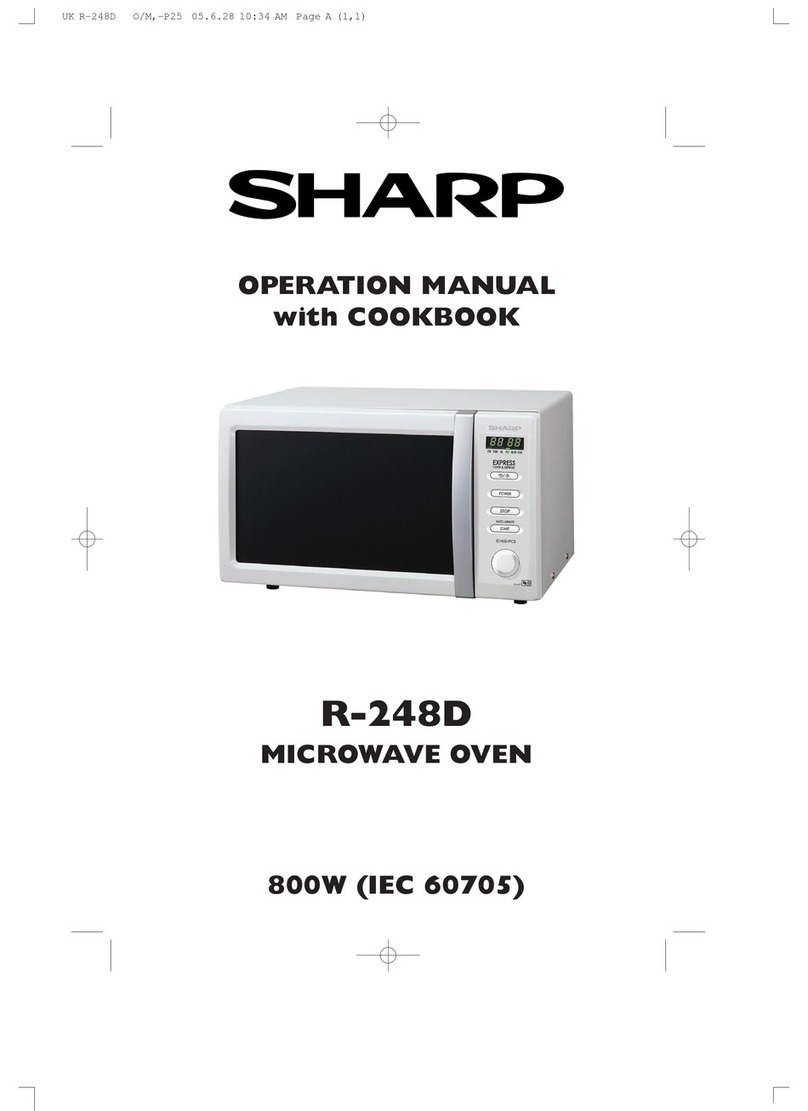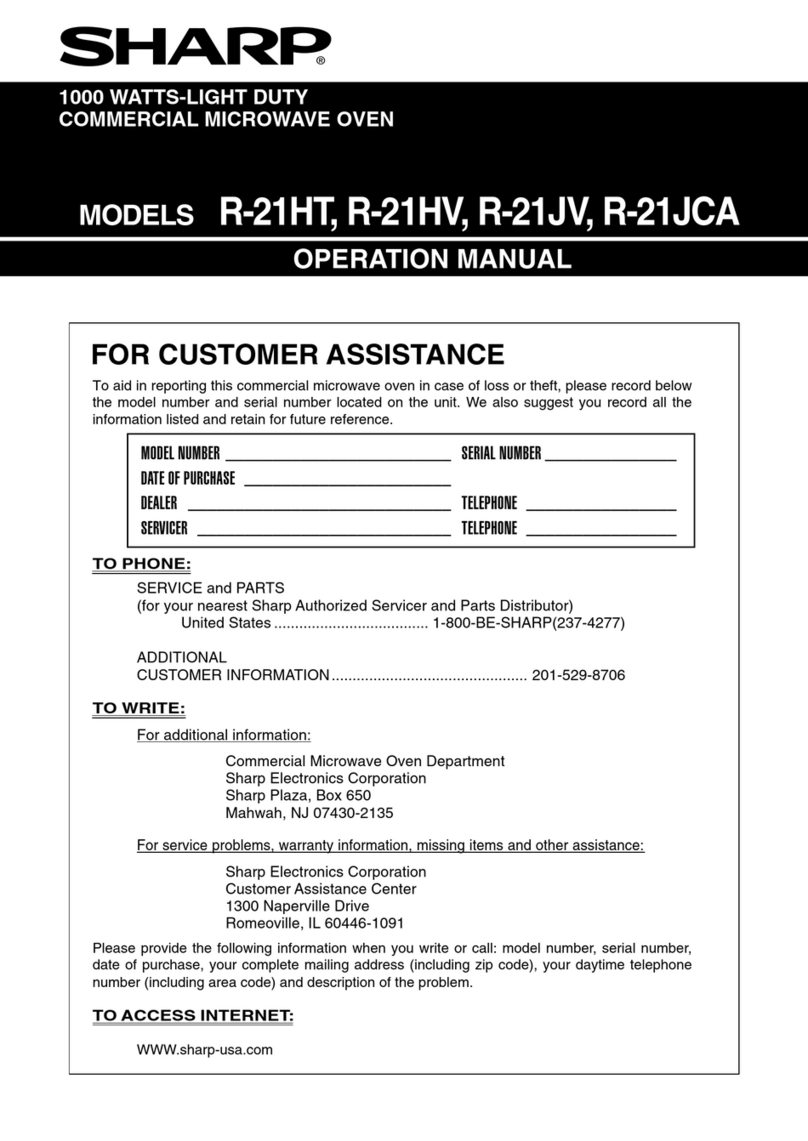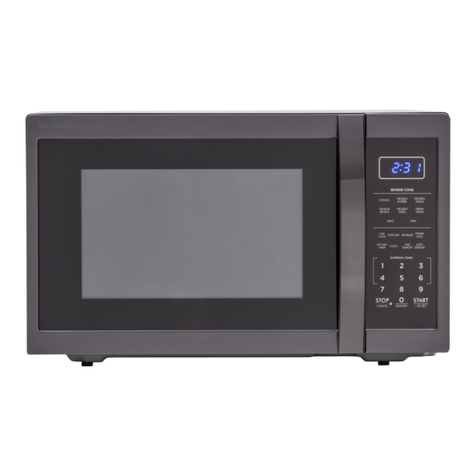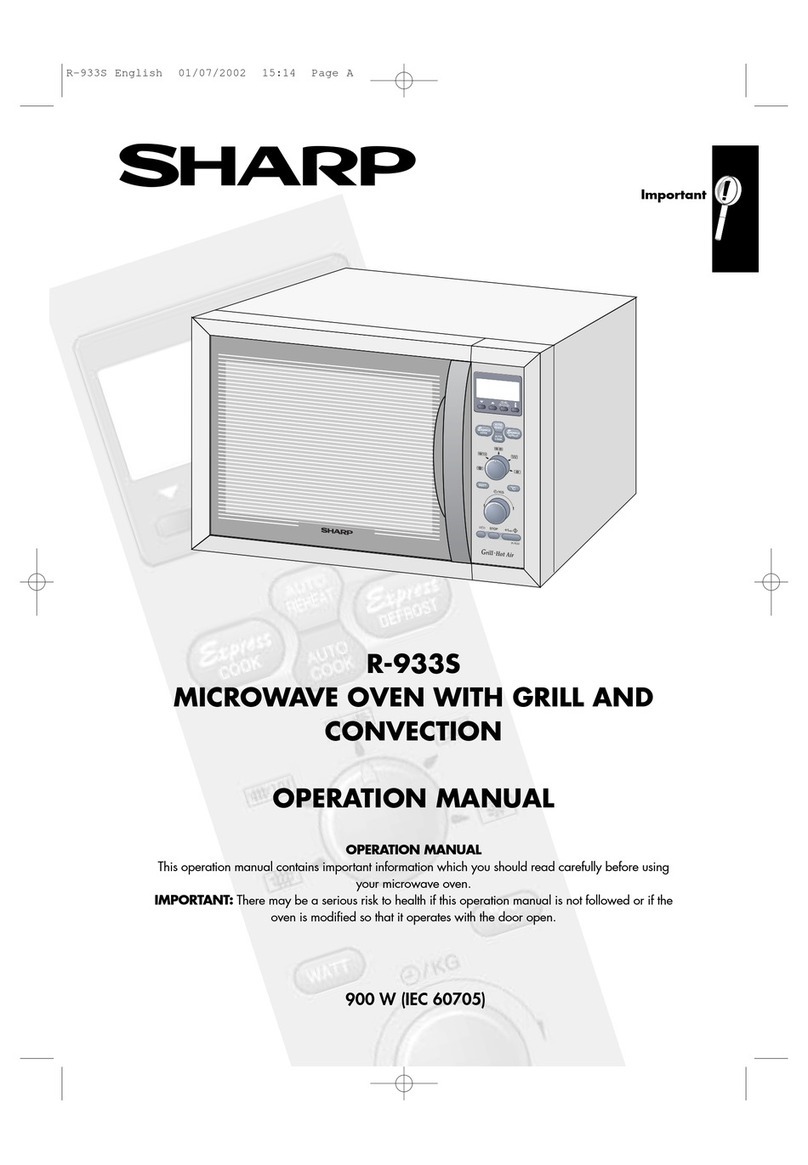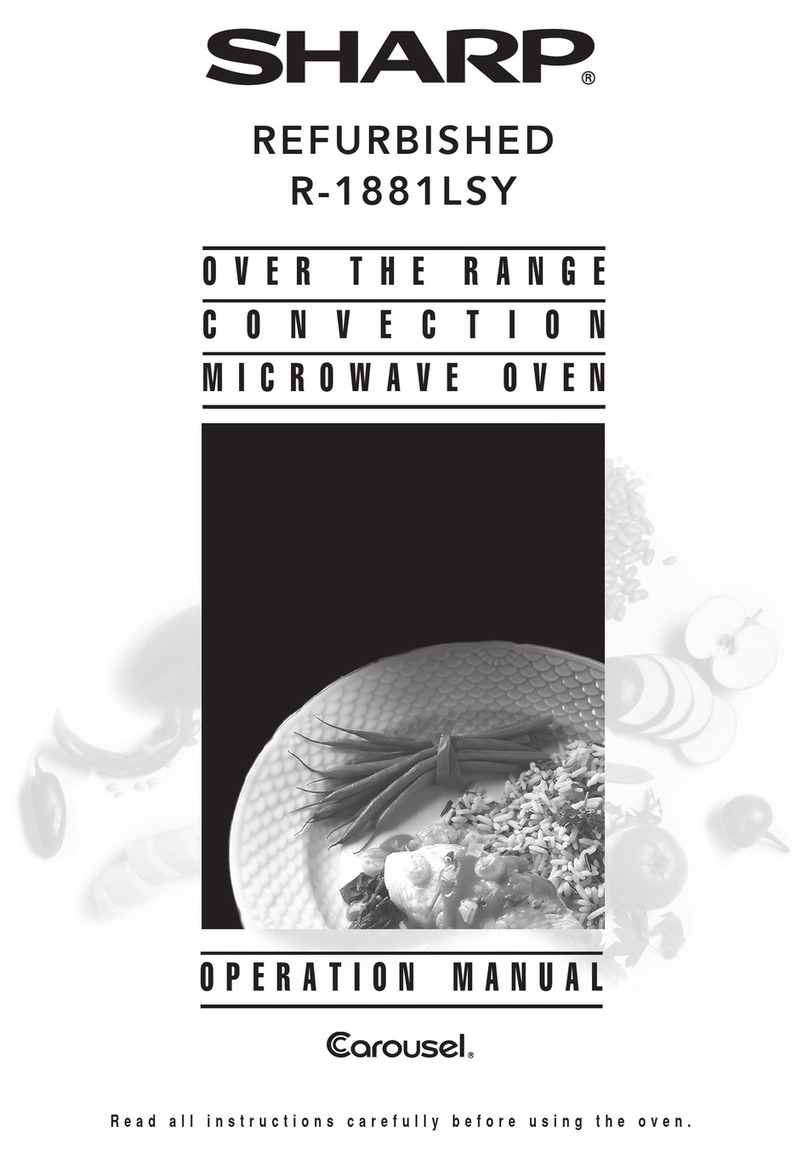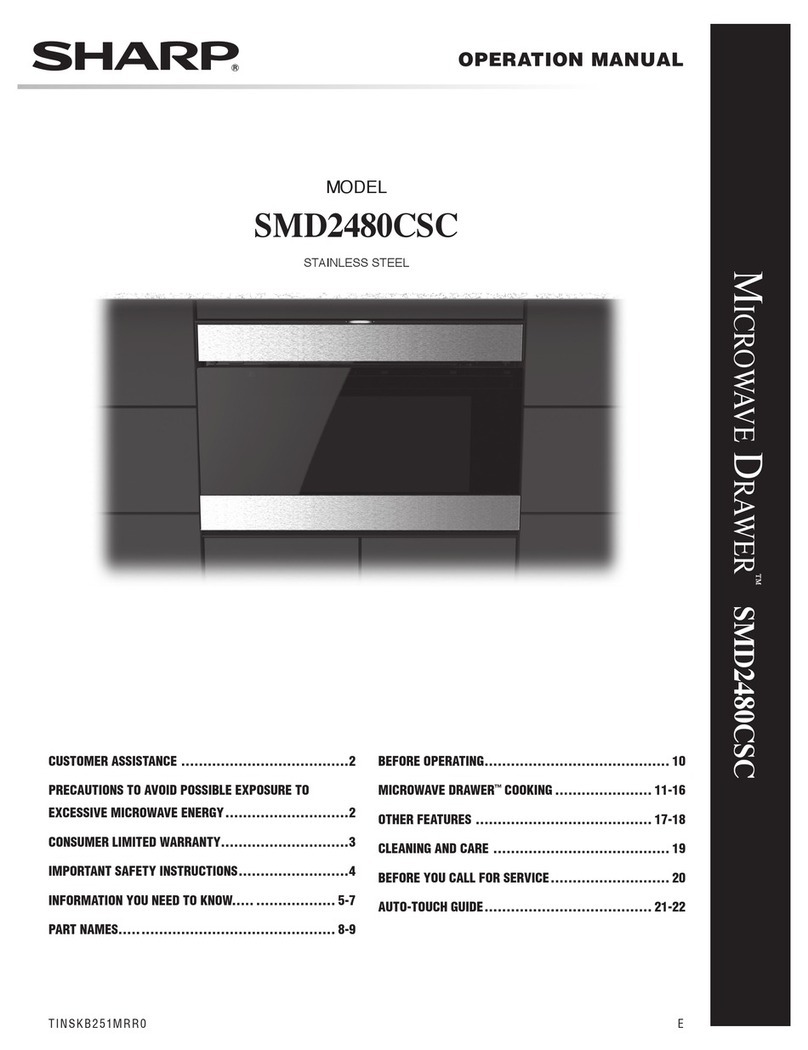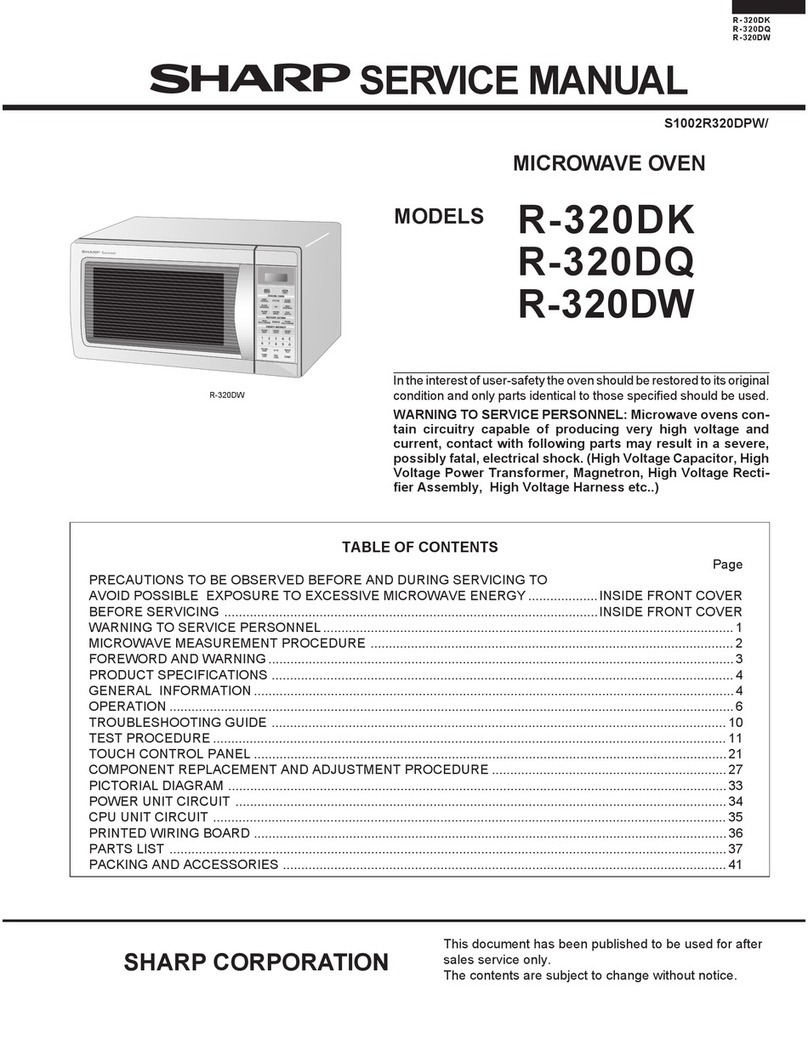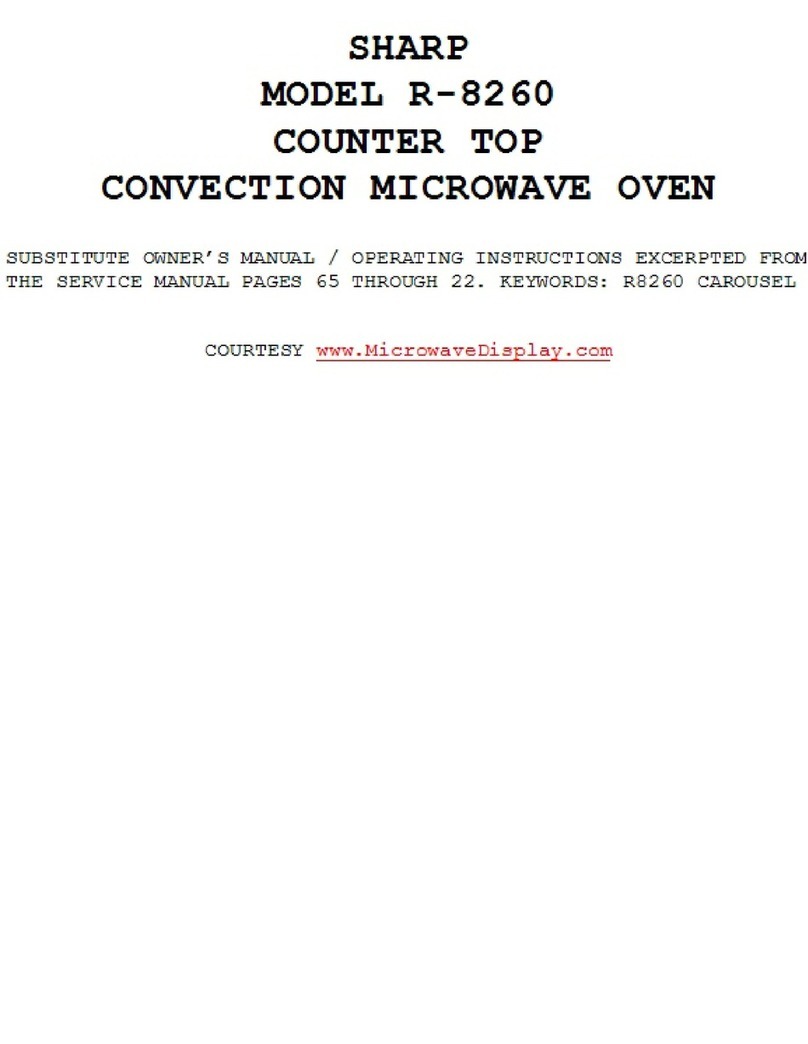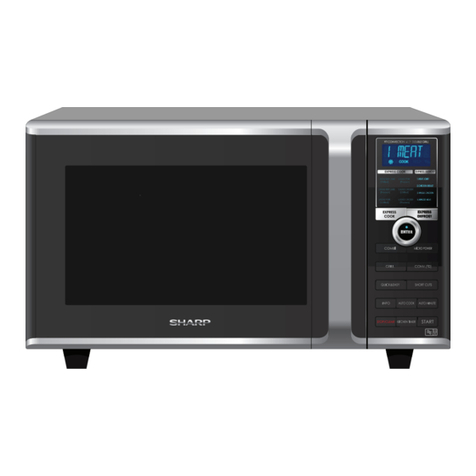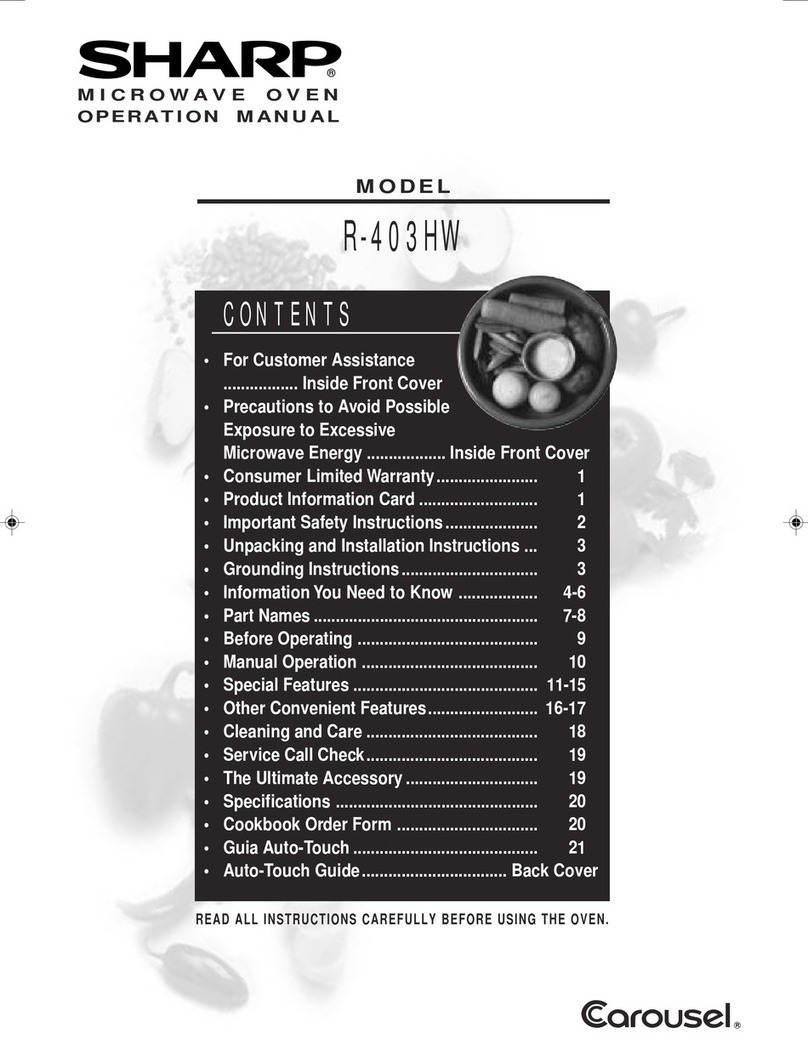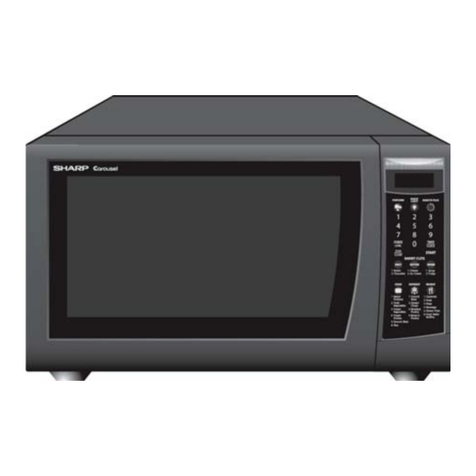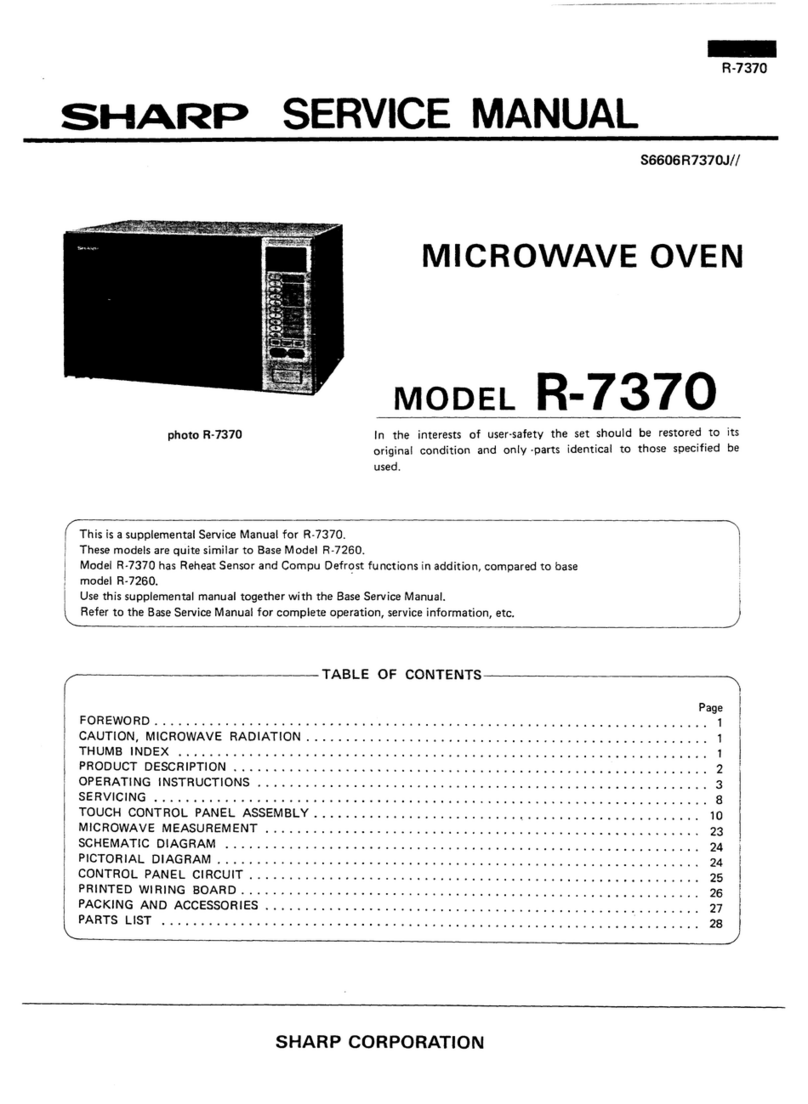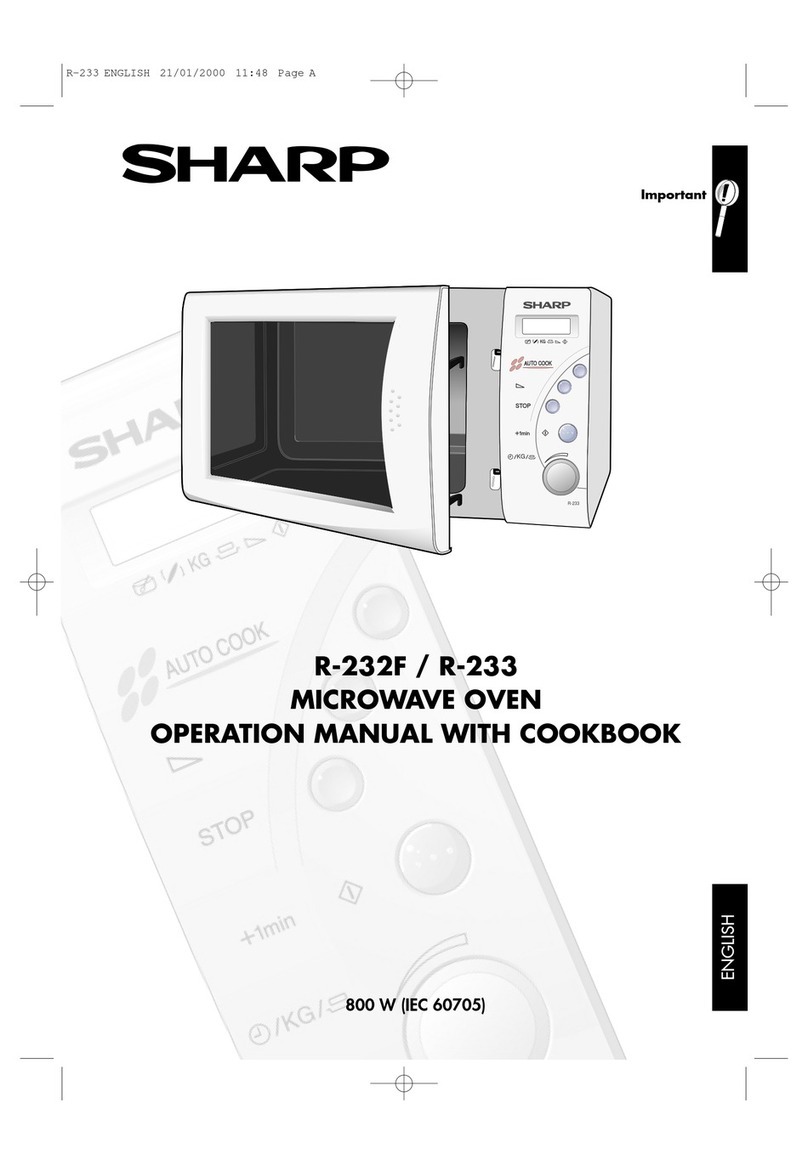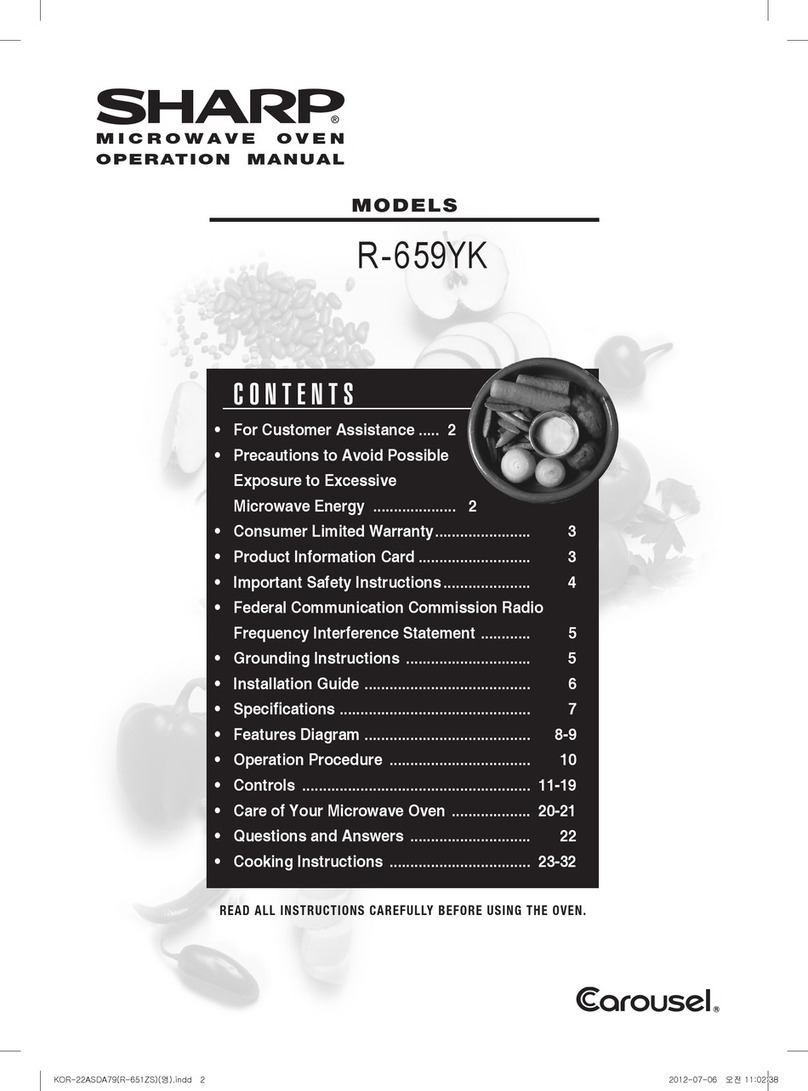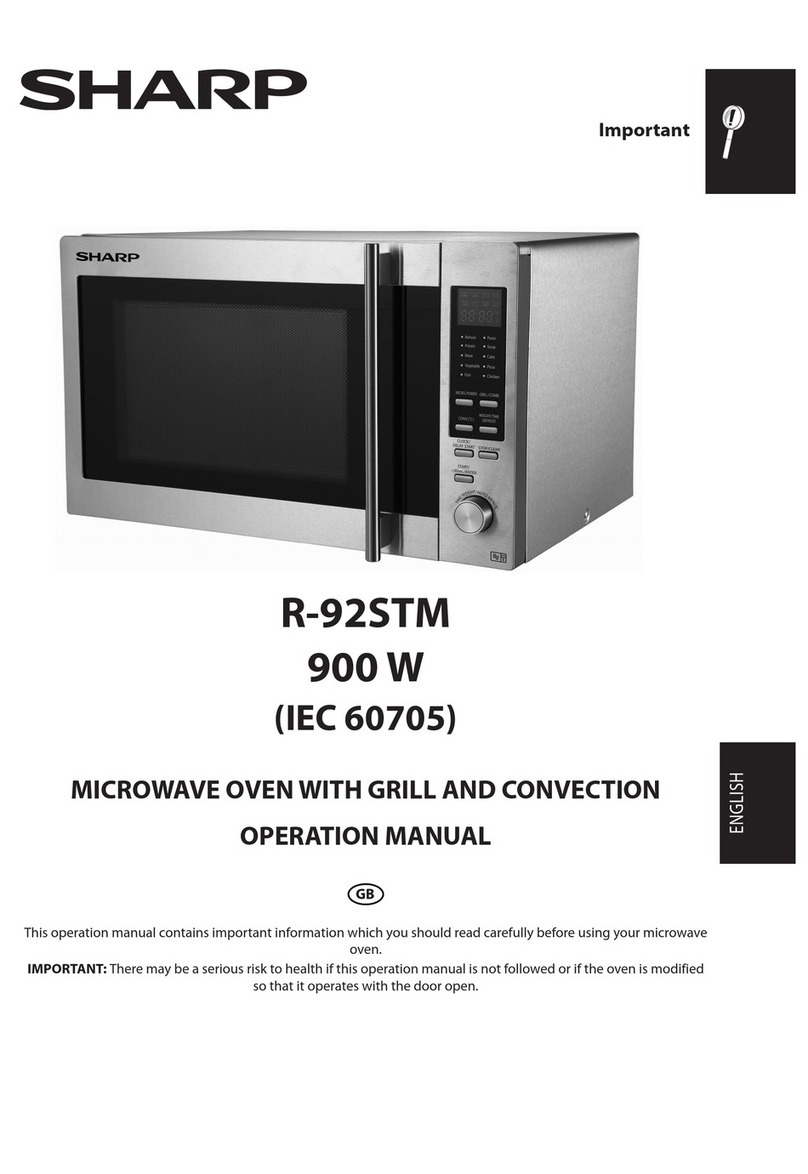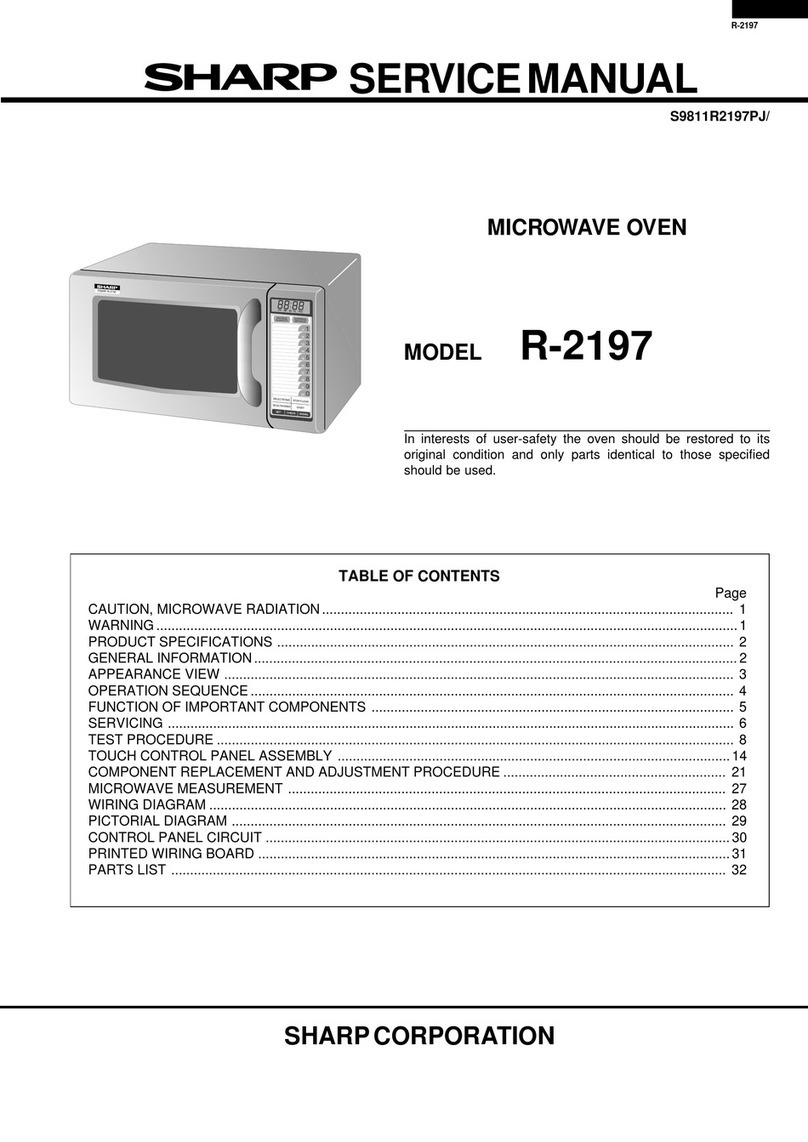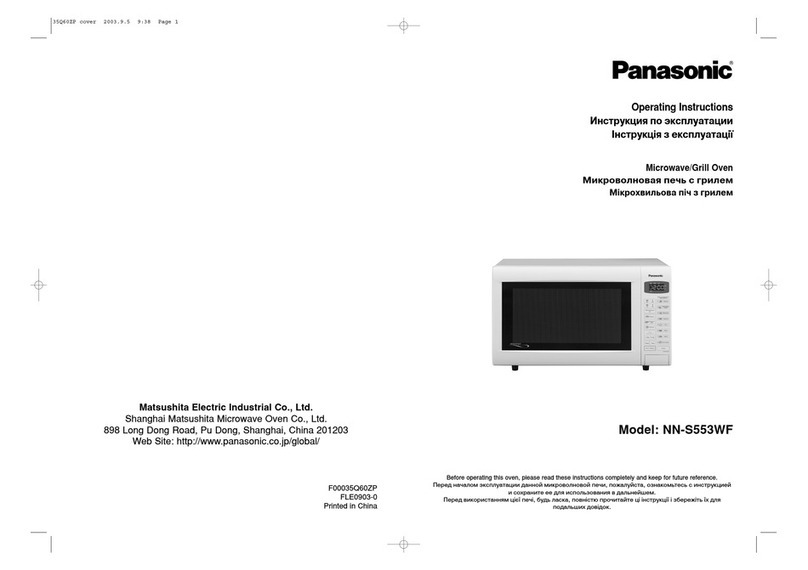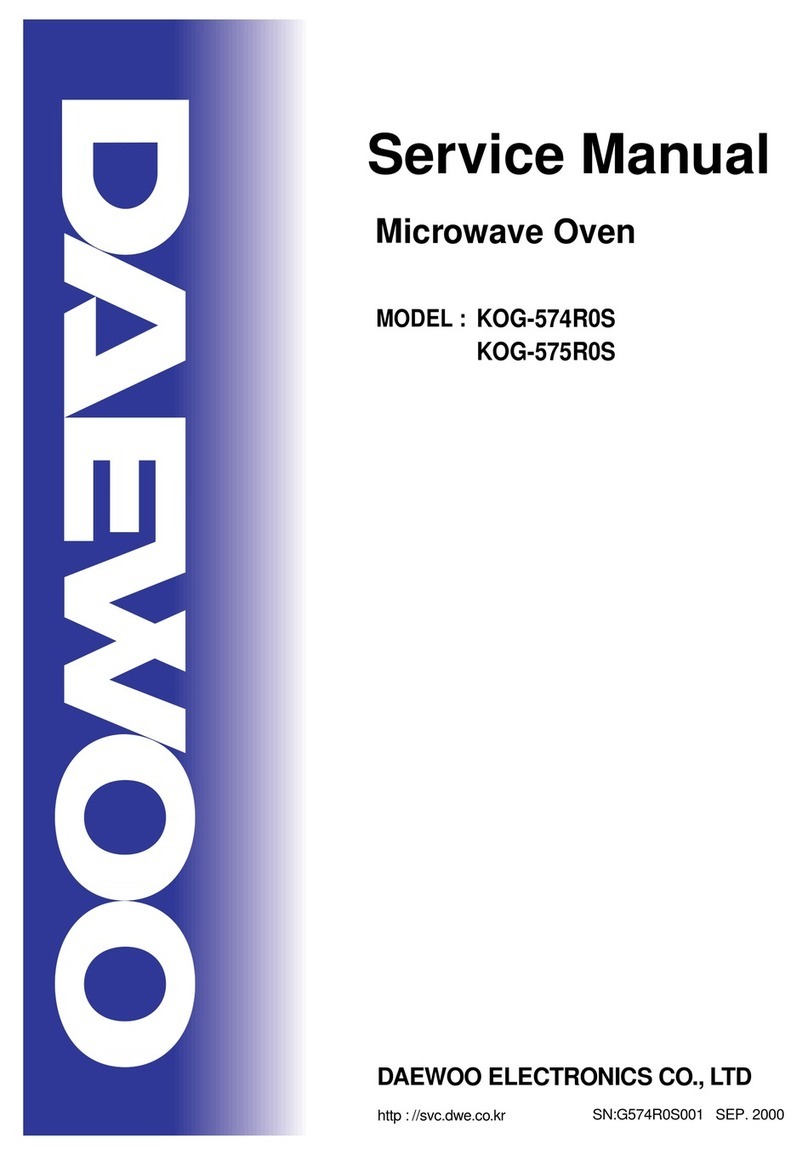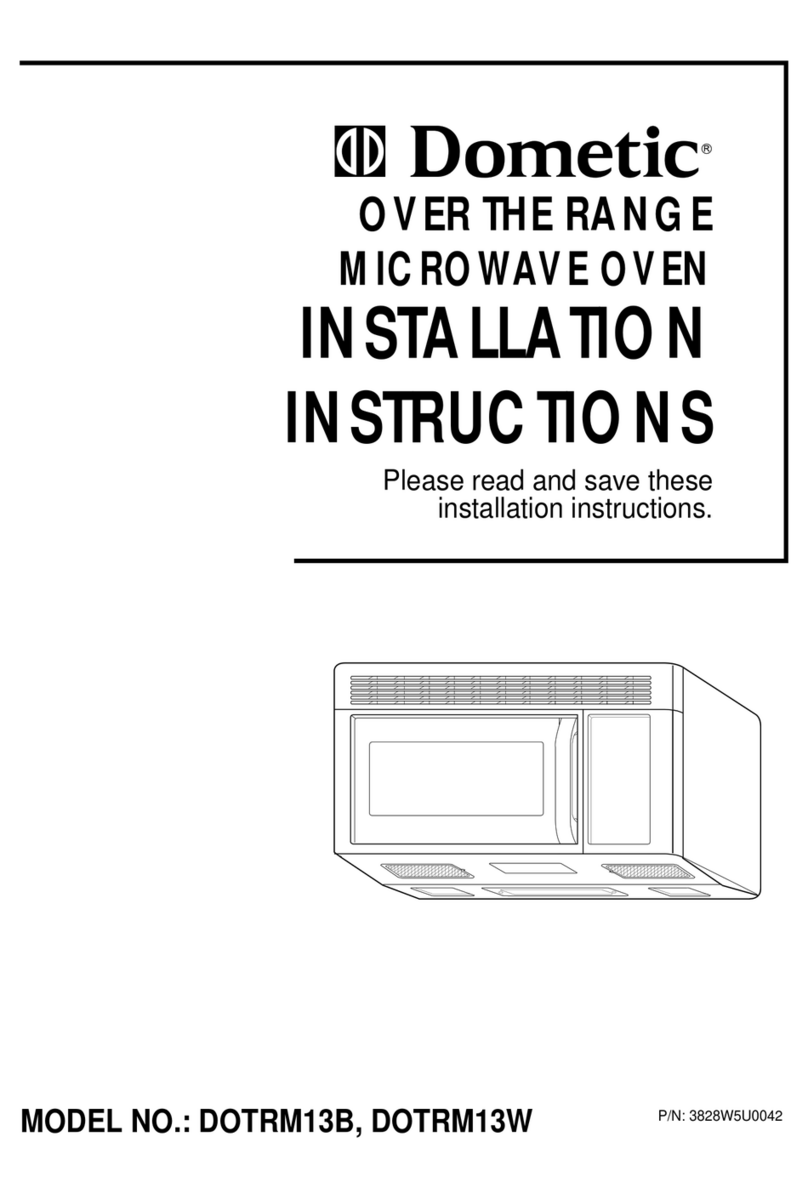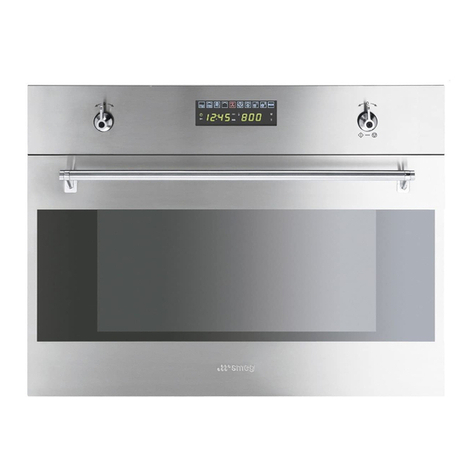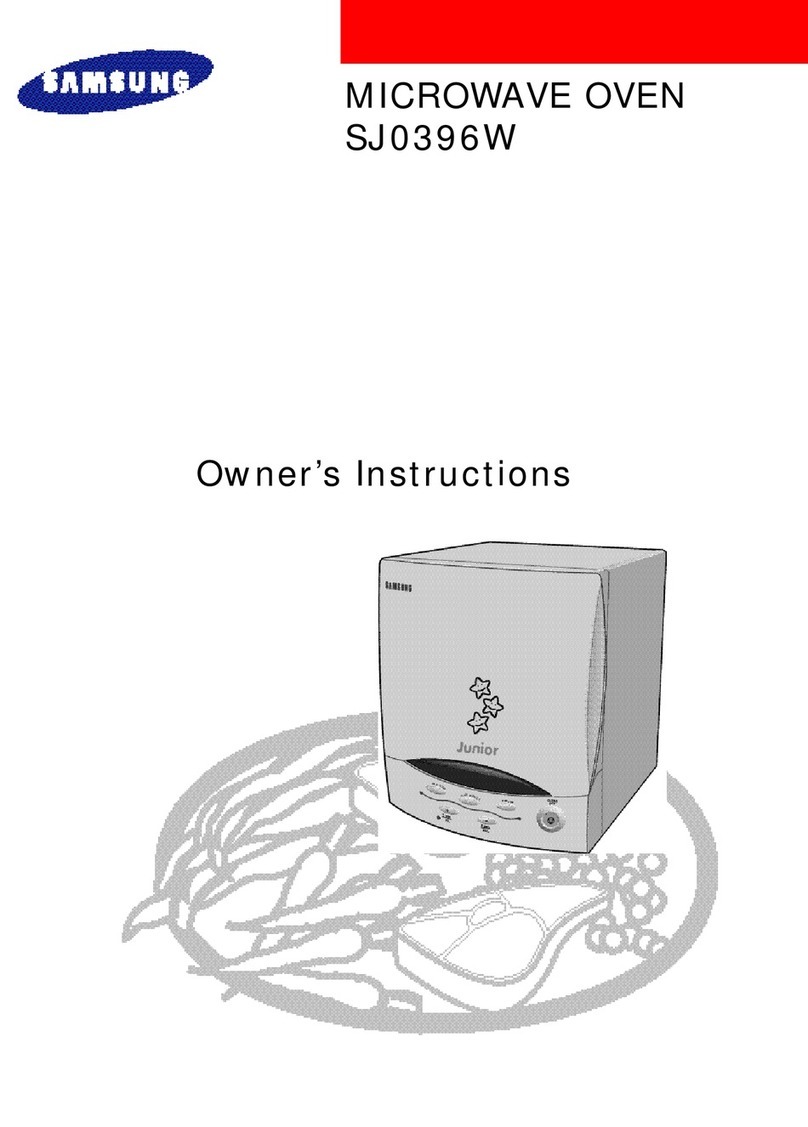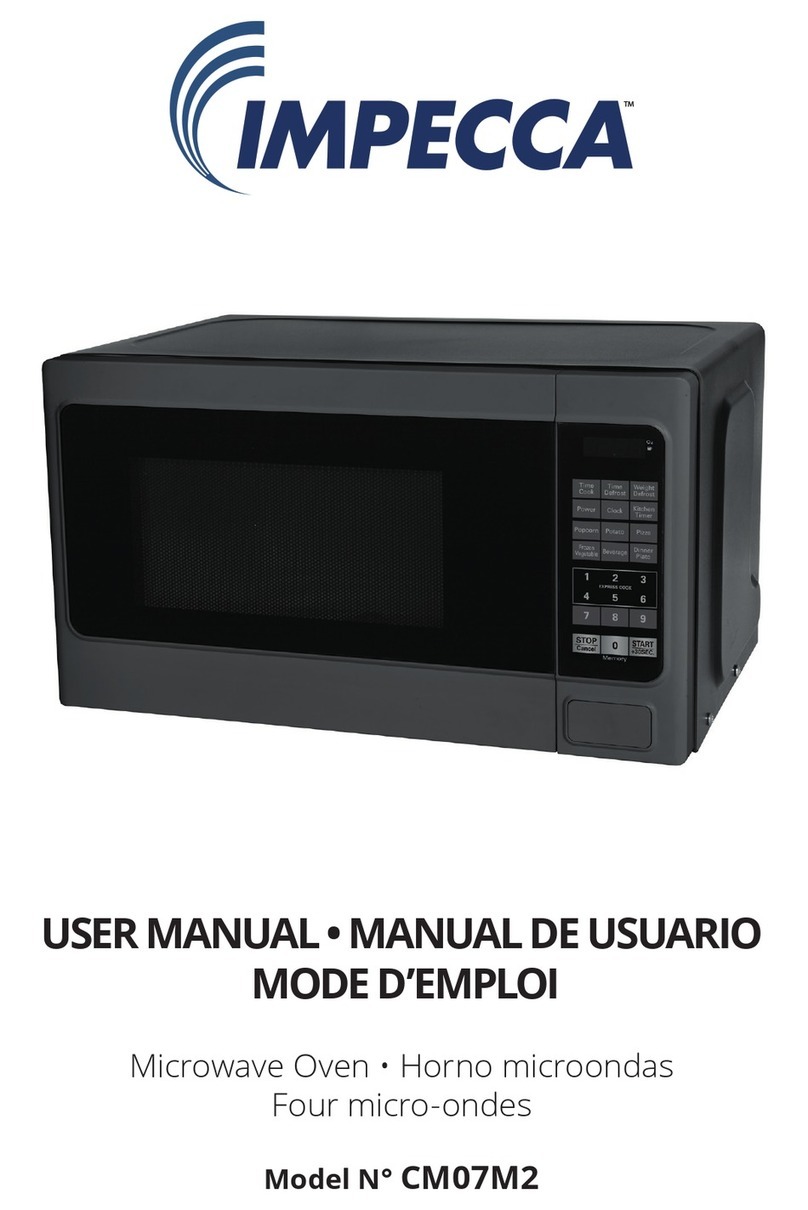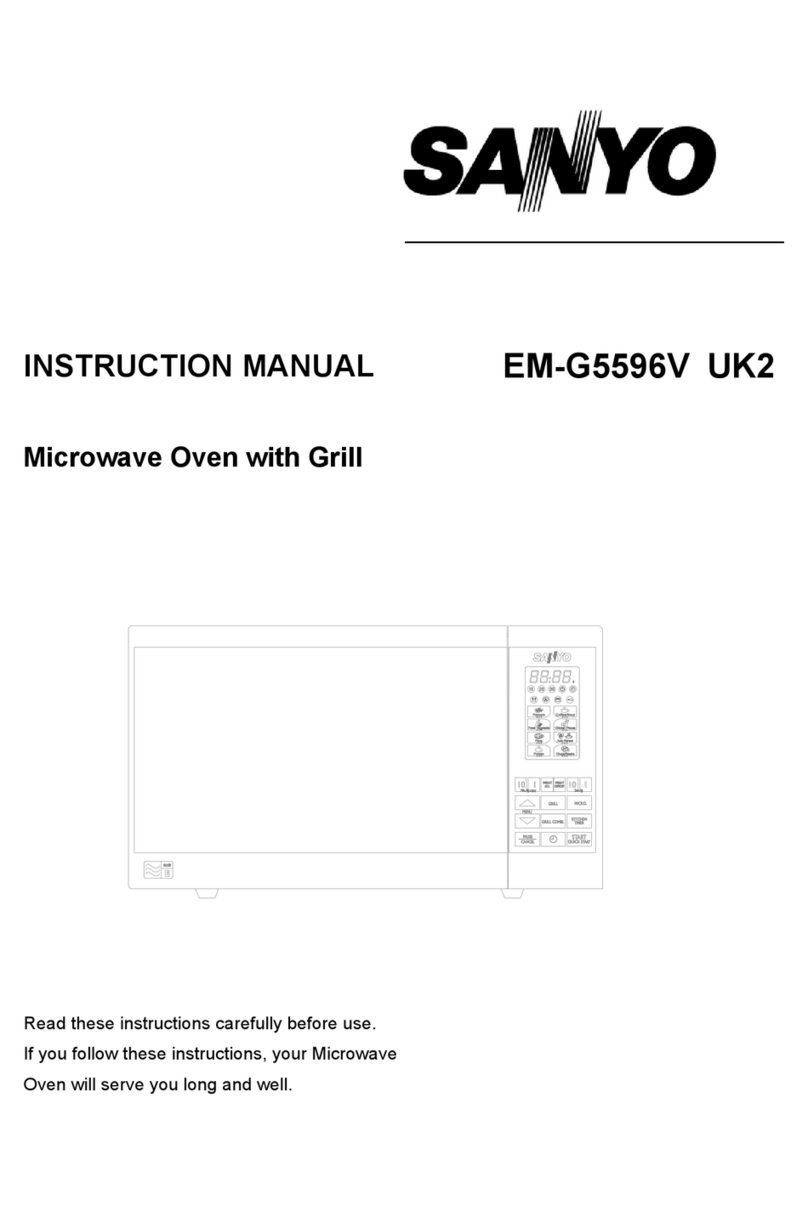
R-22JT
6
OPERATION
DESCRIPTION OF OPERATING SEQUENCE
The following is a description of component functions during
oven operation.
OFF CONDITION
Closing the door activates the door sensing switch and
secondary interlock switches (1), (2). (In this condition, the
monitor switches (1) & (2) contacts are opened.) When the
oven is plugged in, and the rated voltage is supplied to the
control unit, (figure O-1), the display will show " . ".
IDLE CONDITION
When the door is opened, the contacts of the door sensing
switch open, initiating the following:
1. A signal is input to the control unit energizing the coil of
shut-off relay (RY-1).
2. The shut-off relay (RY-1) contacts close completing
circuits to turn on the oven lamp, blower motor and stirrer
motors.
3. If the door remains open, 60 seconds later the control
unit de-energizes shut-off relay (RY-1) turning off the
oven lamp, blower motor and stirrer motors.
When the door is closed, the door sensing switch contacts
close. With the closing of the door sensing switch contacts,
an additional circuit is provided which will permit the opera-
tion of the oven when one of the touch pads is depressed.
Since the control is enabled through the door sensing
switch, the door must be closed before the touch pads will
be effective. When the door is closed, a full 60 second IDLE
condition is always provided for selecting and pressing the
desired touch pads. A 60 second IDLE condition will also
follow the end of each cook cycle.
COOKING CONDITION
When the door is closed from the open position and Memory
pad is touched the, following will occur:
1. The contacts of relays are closed and components
connected to the relays are turned on (For details, refer
to Figure O-3)
2. Rated voltage is supplied to the primary winding of the
power transformer and is converted to about 3.4 volts
output on the filament winding, and approximately 2030
volts on the high voltage winding.
3. The filament winding voltage heats the magnetron
filament and the H.V. winding voltage is sent to a voltage
doubler circuit.
4. The microwave energy produced by the magnetron is
channelled through the waveguide into the cavity feed-
box, and then into the cavity where the food is placed to
be cooked.
5. Upon completion of the cooking time, the oven will revert
to the IDLE condition.
6. When the door is opened during a cook cycle, monitor
switches (1) & (2), door sensing switch, secondary
interlock switches (1), (2) and primary interlock relays
(1), (2) are activated with the following results. The
circuits to the high voltage components are de-energized,
and the digital read-out displays " . " and cooking is
cancelled (in the case of Memory cooking).
7. The monitor switch (1) is electrically monitoring the
operation of the secondary interlock switch (1) and
primary interlock relay (1), and monitor switch (2) is
electrically monitoring the operation of the secondary
interlock switch (2) and primary interlock relay (2), and
monitor switches (1), (2) are mechanically associated
with the door so that it will function in the following
sequence.
(1) When the door opens from a closed position, the contacts
of the primary interlock relays (1), (2) and secondary
interlock switches (1), (2) open. Then the monitor switch
contacts close.
(2) When the door is closed from the open position, the
monitor switches (1), (2) contacts first open, and then the
contacts of the secondary interlock switches (1), (2)
close.
If the secondary interlock switches (1), (2) and primary interlock
relays (1), (2) fail with their contacts closed when the door is
opened, the closing of the monitor switches (1), (2) contacts will
form a short circuit through the monitor fuse, secondary inter-
lock switches (1), (2) and primary interlock relays (1), (2),
causing the monitor fuse to blow.
VARIABLE POWER COOKING
When Variable Cooking Power is programmed, the rated
voltage A.C. is supplied to the power transformer intermittently
through the contacts of relay (RY-2, RY-3). Relays RY-2 and
RY-3 are operated by the control unit within an interval second
time base. Microwave power operation is as follows:
POWER LEVEL ON TIME OFF TIME
100% 32 sec. 0 sec.
90% 30 sec. 2 sec.
80 % 26 sec. 6 sec.
70% 24 sec. 8 sec.
60% 22 sec. 10 sec.
50% 18 sec. 14 sec.
40% 16 sec. 16 sec.
30% 12 sec. 20 sec.
20% 8 sec. 24 sec.
10% 6 sec. 26 sec.
0% 0 sec. 32 sec.
Note: The ON/OFF time ratio does not exactly correspond
with the percentage of microwave power, because
approx. 2 seconds are needed for heating of the
magnetron filament.
